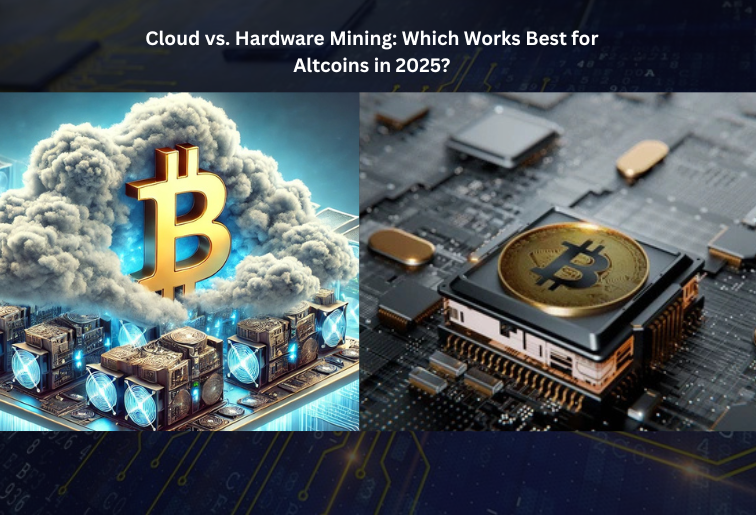As cryptocurrency mining evolves, the debate between cloud vs. hardware mining continues to shape the industry. With altcoins becoming increasingly popular, miners must decide which method offers better profitability, scalability, and efficiency in 2025. Understanding the differences between cloud mining and hardware mining can help investors and miners make informed decisions in a rapidly changing market.
What is cloud mining?
Cloud mining allows users to rent mining power from remote data centers without owning physical mining rigs. This method eliminates the need for costly hardware, electricity expenses, and maintenance efforts. Instead, miners pay a fee to a cloud mining provider in exchange for a share of the mined cryptocurrency.
Pros of Cloud Mining:
- No upfront hardware investment—miners can start without purchasing expensive mining rigs.
- Low maintenance: The cloud mining provider handles all technical and maintenance tasks.
- Energy-efficient – No need to worry about electricity costs and cooling requirements.
Cons of Cloud Mining:
- Lower control: Users rely on third-party services, which can lead to potential scams or fraud.
- Less profitability: cloud mining contracts may have hidden fees that reduce overall earnings.
- Limited flexibility: Users cannot optimize mining strategies as they would with hardware mining.
Also read :- Best Arbitrage Trading Platforms for 2025
What is Hardware Mining?
Hardware mining involves purchasing and operating mining equipment, such as ASICs or GPUs, to mine cryptocurrencies independently. This method gives miners complete control over their operations but requires significant investment in infrastructure and energy.
Pros of Hardware Mining:
- Full control: miners can customize and optimize their mining settings for maximum efficiency.
- Higher long-term profitability: no contract fees, allowing for greater earnings over time.
- Supports network decentralization: Hardware miners contribute to blockchain security by maintaining a decentralized network.
Cons of Hardware Mining:
- High upfront costs: ASIC and GPU mining rigs require substantial investment.
- Expensive electricity and cooling: Hardware mining consumes large amounts of power.
- Ongoing maintenance: Equipment needs regular maintenance and upgrades.
Bitcoin Mining Profitability 2025 and the Future of Altcoin Mining
With Bitcoin mining profitability 2025 becoming a hot topic, many miners are shifting focus to altcoins, which may offer better rewards. The success of cloud mining vs hardware mining for altcoins will depend on factors like:
- Mining difficulty: Some altcoins may become more profitable due to lower competition.
- Electricity costs: Regions with cheap energy will benefit hardware miners more.
- Regulatory changes: Government policies could impact cloud mining providers and hardware mining operations.
Also read :- How to Choose the Best Crypto Staking Services for Your Crypto Assets
Conclusion: Which Method is Best in 2025?
Choosing between cloud mining and hardware mining depends on individual goals and risk tolerance. Cloud mining is ideal for those seeking a hassle-free experience, while hardware mining remains the go-to choice for miners wanting full control over their operations.
As Bitcoin mining profitability in 2025 shifts, altcoins will continue to offer new opportunities. Miners must stay informed and adapt to market trends to maximize their earnings.
For more insights on cryptocurrency mining, visit Blockchain77.

